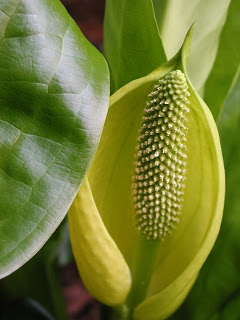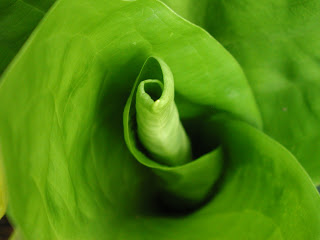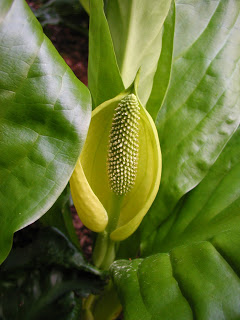“Methinks the first obvious evidence of spring is the pushing out of the swamp willow catkins…then the pushing up of the skunk–cabbage spathes…” ~Henry David Thoreau (Journal; March 10, 1853)
If you can get past associating its pungent odor with an unpleasant smelling critter, our Western Skunk Cabbage, Lysichiton americanus, is quite the striking beauty in the springtime woods. Otherwise known as Yellow Skunk Cabbage, Swamp Lantern or Fairy Lanterns, this plant grows in marshy areas along the coast from Alaska to California, and as far inland as Wyoming. This is a plant of many clever qualities, among which are the distinctive strong smell acting as a lure to attract pollinators, and the blooming stem which actually produces enough heat to melt the snow around it. Unfortunately, skunk cabbage has little wild food value with the sharp calcium oxalate crystals causing severe irritation to the mouth, throat and digestive system, but it has a rich history of use as berry baskets, salmon baking wraps, food storage containers and medicine by native peoples. It also makes a good medicinal food for bears, who like to eat the rhizomes upon emerging from hibernation as a laxative.
I don’t know about you, but I’m really enjoying this idea of Fairy Lanterns. When their bright yellow flash of color catches your eye on a rainy evening, it isn’t hard to imagine that they are little lanterns lighting pathways around the swamp for all the faeries and forest folk.



I think these are such beautiful plants and I love learning more about them. Beautiful pictures.